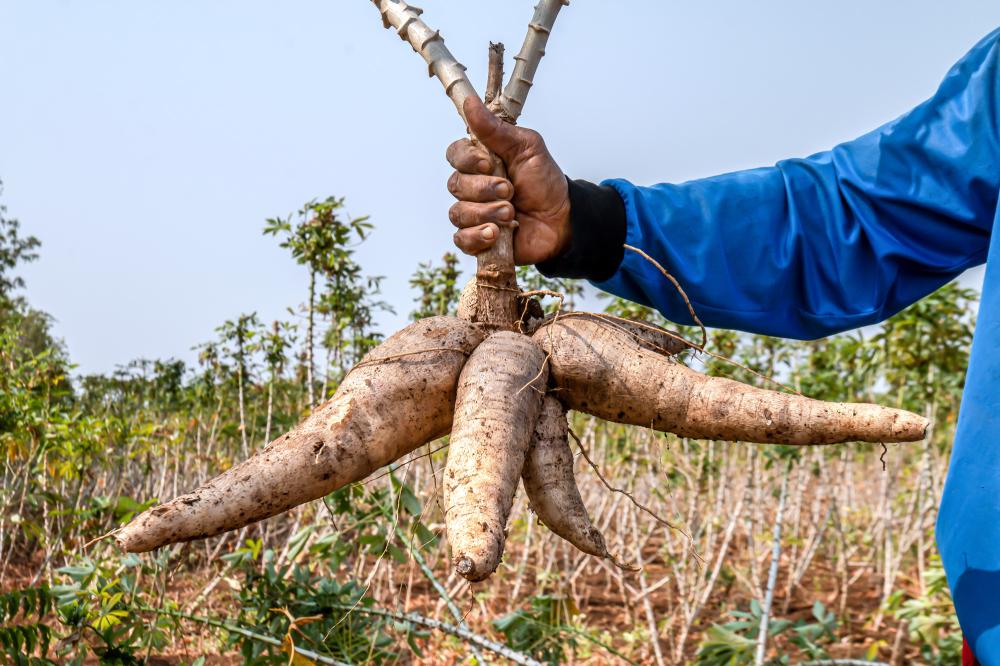Tulime Commercial Farms
A Comprehensive Guide to Cassava Farming
Briefing
Description :
Cassava, a staple crop in many parts of the world, is a resilient and versatile plant that thrives in tropical and subtropical climates. Known for its adaptability, cassava is a primary source of carbohydrates and has immense economic potential. Whether you're a novice farmer or an experienced agriculturist looking to diversify, this guide will provide you with essential tips for successful cassava farming.
1. Understanding Cassava and Its Requirements
Cassava is a tropical root crop, primarily grown for its starchy tubers. It thrives in warm, well-drained soils and requires specific conditions for optimal growth:
Temperature: Best grown in temperatures between 25–32°C.
Rainfall: Requires well-distributed rainfall.
Soil: Prefers slightly acidic to neutral soils with a pH of 5.5–6.5. Avoid planting in highly acidic soils, often indicated by the presence of ferns.
Sunlight: Requires full sun for at least 6–8 hours a day.
2. Preparing for Cassava Farming
a. Choosing the Right Location
Select a site with loose, well-drained soil and adequate sunlight. Avoid waterlogged areas as cassava roots can rot in poorly drained soils.
b. Soil Preparation
Plow the field to loosen the soil and remove weeds. If necessary, enrich the soil with organic matter such as compost or well-rotted manure.
c. Selecting Planting Material
Cassava is propagated using stem cuttings from mature plants. Cuttings should be 20–30 cm long and taken from the middle portion of a healthy stem. Choose disease-free, high-yielding varieties for planting.
3. Planting Cassava
When to Plant: Plant at the beginning of the rainy season for the best establishment.
Spacing: Space the cuttings 1 meter apart in rows and between rows.
Planting Technique: Place one cutting in each hole, ensuring at least two nodes are buried, and cover lightly with soil. For an acre, use approximately 8 bags of stem cuttings (each containing 500 cuttings) to achieve 4,000 plants.
4. Caring for Cassava
a. Fertilizing
Use inorganic fertilizers to boost soil fertility. Apply the recommended dose of nitrogen, phosphorus, and potassium at planting and mid-growth stages.
b. Disease and Pest Control
Cassava is susceptible to pests and diseases, such as cassava mosaic disease (CMD) and cassava brown streak disease (CBSD). To minimize damage:
Use disease-tolerant varieties like NASE 14, NASE 19, NARO CASS 1, and NARO CASS 2.
Regularly inspect plants for signs of disease or pest infestation.
Practice crop rotation and maintain good field hygiene.
c. Water Management
While cassava is drought-tolerant, ensure adequate water during its initial growth stages. Avoid overwatering as it can lead to root rot.
5. Harvesting Cassava
Cassava matures in 8–12 months, though some varieties take up to 18 months, especially under adverse conditions like drought or low temperatures. To harvest:
Cut the stem 30 cm above the ground.
Loosen the soil around the roots with a stake or hoe.
Gently pull out the roots to avoid breaking them.
6. Post-Harvest Practices
a. Replanting
Cut the harvested plant tops into new stem cuttings for replanting.
b. Processing
Cassava roots can be processed into various products such as flour, starch, or ethanol. Proper processing ensures longer shelf life and added value.
c. Utilizing Leaves
Cassava leaves can be left in the field as organic mulch to improve soil fertility or harvested as a nutritious vegetable rich in calcium, magnesium, iron, and vitamins A and C.
7. Economic Potential and Benefits
Yield
An acre of cassava can produce up to 4,000 plants, with potential yields varying based on care and conditions. Each plant can yield multiple tubers, depending on the variety and farming practices.
Uses
Food Security: Cassava tubers and leaves are essential food sources.
Industrial Applications: Used in making starch, ethanol, animal feed, and biofuels.
Export Opportunities: Cassava products have growing demand in international markets.
Health Benefits of Leaves
Cassava leaves are rich in essential minerals, vitamins, and antioxidants. They provide calcium, magnesium, and iron, which are vital for bone health and immunity.
8. Challenges and Solutions
a. Diseases
Control diseases like CMD and CBSD by planting resistant varieties and maintaining clean fields.
b. Weather Dependence
Cassava requires warm weather for proper growth. In cooler climates, it can take up to 18 months to mature.
9. Budgeting and Planning
Successful cassava farming requires strategic planning. Costs include land preparation, stem cuttings, fertilizers, and labor. However, with proper management, cassava farming can yield significant profits.
Conclusion
Cassava farming is a rewarding venture with vast potential for food security and economic gain. By understanding its requirements and adopting good farming practices, you can enjoy bountiful harvests and contribute to sustainable agriculture. Whether you're growing cassava for local consumption or export, its resilience and versatility make it a valuable crop for any farmer.





